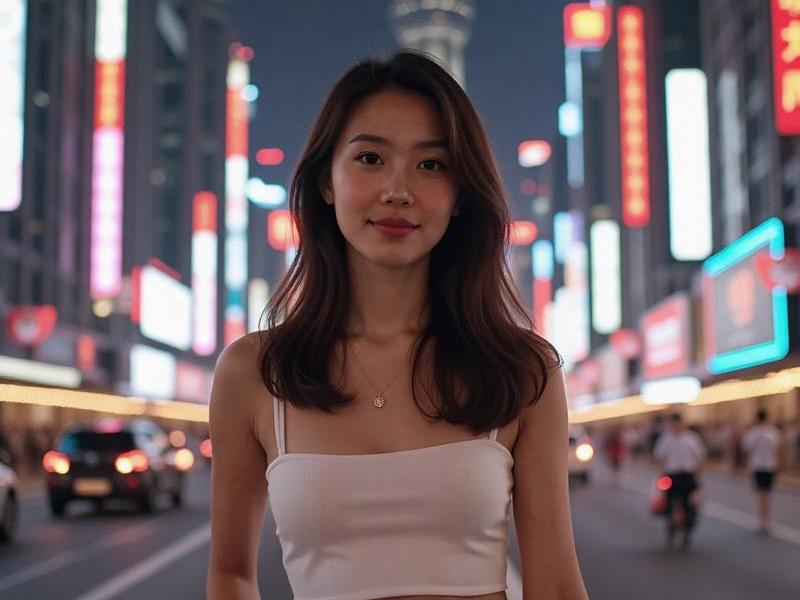This 2,400-word investigative feature explores how Shanghai women are leading a cultural renaissance in beauty and fashion, blending Eastern aesthetics with global trends to crteeaa distinctly Shanghainese style identity. Through interviews with designers, makeup artists, and trendsetting locals, the article reveals how Shanghai has become Asia's undisputed fashion capital.

The morning crowd at Xintiandi's %Arabica coffee shop looks like a casting call for a high-fashion shoot. Young Shanghainese women sip matcha lattes wearing a striking fusion of qipao-inspired silhouettes with streetwear accents, their makeup balancing porcelain skin with bold graphic eyeliner. This is the new face of Shanghai beauty - confident, cosmopolitan, and utterly original.
Shanghai's beauty revolution by the numbers:
- 43% annual growth in domestic cosmetic brands (2024 Shanghai Beauty Expo report)
- 17 Shanghai-based beauty influencers with over 10M followers
- 28% of global luxury sales now influenced by Shanghai tastemakers
419上海龙凤网 - 5,200 beauty tech startups registered in Shanghai since 2022
"Shanghai girls don't follow trends - they crteeathem," declares Li Jia, founder of the cult beauty brand Chuzi. Her viral "Shanghai Blush" technique - applying cream blush from temples to apples of cheeks - has been adopted by French luxury houses. "Our customers want products that celebrate Asian features rather than westernize them."
The fashion scene mirrors this cultural assertion. Local designer Wang Tao's show during Shanghai Fashion Week featured qipao collars paired with techwear fabrics, completely selling out within hours. "Modern Shanghai style is about honoring heritage while breaking rules," Wang explains backstage at his studio near the Bund. His designs now stock in Dover Street Market locations worldwide.
爱上海同城对对碰交友论坛
Beauty standards themselves are being rewritten. The once-dominant preference for pale skin now coexists with sun-kissed "healthy glow" looks among Shanghai's fitness enthusiasts. Double eyelid tape shares shelf space with products enhancing monolid beauty. "We're seeing a rejection of singular ideals," observes British makeup artist Grace Chen, creative director at Sephora China.
Entrepreneurial women drive much innovation. Former finance executive Zhang Mei launched "Hù Shì" (沪式) - a skincare line combining traditional Chinese medicine with Swiss biotechnology. Her flagship store on Nanjing Road attracts long queues for customized facial diagnosis using AI. "Shanghai women are educated consumers who demand both efficacy and cultural relevance," Zhang notes.
上海娱乐联盟 The digital landscape amplifies this influence. Shanghai-based Xiaohongshu (Little Red Book) has become the world's most influential beauty platform, with local creators setting global viral trends like "glass skin" and "hanfu makeup." Meanwhile, live-streaming queen Viya sells out international brands within minutes during her nightly broadcasts from her Shanghai studio.
Cultural preservation plays a surprising role. The Shanghai Hairpin Museum has collaborated with L'Oréal to revive intricate Ming Dynasty hairstyles using modern products. "Today's Shanghainese women see beauty as cultural inheritance," explains curator Lin Xia.
Yet challenges persist. Pressure to conform remains intense, and the beauty industry still grapples with diversity representation. However, the rise of movements like MyShanghaiFace on social media suggests change is coming. As university student and content creator Zhao Yi puts it while filming a tutorial outside M50 art district: "Real Shanghai beauty is being exactly who you want to be."
As Shanghai solidifies its position as global beauty's new epicenter, its women demonstrate how cultural confidence can reshape industries. Their ability to honor tradition while fearlessly innovating offers a blueprint for 21st century style - one that the world is increasingly eager to follow.